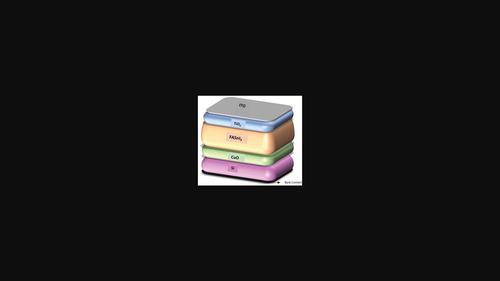当前位置:
X-MOL 学术
›
Adv. Theory Simul.
›
论文详情
Our official English website, www.x-mol.net, welcomes your
feedback! (Note: you will need to create a separate account there.)
Improving the Recombination Losses by the Inclusion of Bi-HTM (CuO/Silicon) Layers for Formamidinium Tin-Based Perovskite Solar Cells
Advanced Theory and Simulations ( IF 2.9 ) Pub Date : 2023-05-28 , DOI: 10.1002/adts.202300106 M. Jamil 1 , Rasmiah S. Almufarij 2 , Adnan Ali 1 , Arslan Ashfaq 1 , Khalid Mahmood 1 , Mohamed Abdelsabour Fahmy 3, 4 , Michael M. Sabugaa 5 , Rania Saleh Alqurashi 6 , Elsammani Ali Shokralla 6 , Obaidallah A. Algethami 6
Advanced Theory and Simulations ( IF 2.9 ) Pub Date : 2023-05-28 , DOI: 10.1002/adts.202300106 M. Jamil 1 , Rasmiah S. Almufarij 2 , Adnan Ali 1 , Arslan Ashfaq 1 , Khalid Mahmood 1 , Mohamed Abdelsabour Fahmy 3, 4 , Michael M. Sabugaa 5 , Rania Saleh Alqurashi 6 , Elsammani Ali Shokralla 6 , Obaidallah A. Algethami 6
Affiliation

|
The innovative lead-free formamidinium tin-based perovskite solar cell structure is considered nontoxic and potentially more stable than lead-based, although its performance is not yet excellent. This research aims to enhance the power conversion efficiency of perovskite solar cells and reduce the recombination losses. According to device modeling, the FASnI3 perovskite solar cell demonstrates a packing conversion efficiency of 14.3% (open circuit voltage (Voc) = 0.899 V, fill factor (FF) = 58.9%, and current density (Jsc) = 26.06 mA cm−2) by employing Bi hole transporting layers, a copper oxide, and crystalline silicon layers. Some features that affect the device include the thickness of each layer, the doping density of copper oxide and a silicon layer, and the back contact metalwork function. It is proposed that Bi-HTL reduce the carriers to enter hole transport layer (HTL) as the doping change so that decreasing charge carriers recombination and enhancing the device efficiency in tin-based perovskite solar cell with the structure of ITO/TiO2/FASnI3/CuO/Si/C. Furthermore, the impacts of various charge transport layers on energy band alignment, recombination, electric field, and IV properties are thoroughly explored.
中文翻译:

通过在甲脒锡基钙钛矿太阳能电池中加入 Bi-HTM(CuO/硅)层来改善复合损耗
创新的无铅甲脒锡基钙钛矿太阳能电池结构被认为是无毒的,并且可能比铅基更稳定,尽管其性能还不是很出色。本研究旨在提高钙钛矿太阳能电池的能量转换效率并减少复合损失。根据器件建模,FASnI 3钙钛矿太阳能电池的堆积转换效率为 14.3%(开路电压 ( V oc ) = 0.899 V,填充因子 (FF) = 58.9%,电流密度 ( J sc ) = 26.06 mA)厘米−2)通过采用Bi空穴传输层、氧化铜和晶体硅层。影响器件的一些特征包括每层的厚度、氧化铜和硅层的掺杂密度以及背接触金属制品功能。提出在ITO/TiO 2 /FASnI结构的锡基钙钛矿太阳能电池中,Bi-HTL随着掺杂的变化减少进入空穴传输层(HTL)的载流子,从而减少载流子复合,提高器件效率3 /CuO/Si/C。此外,还深入探讨了各种电荷传输层对能带排列、复合、电场和 IV 特性的影响。
更新日期:2023-05-28
中文翻译:

通过在甲脒锡基钙钛矿太阳能电池中加入 Bi-HTM(CuO/硅)层来改善复合损耗
创新的无铅甲脒锡基钙钛矿太阳能电池结构被认为是无毒的,并且可能比铅基更稳定,尽管其性能还不是很出色。本研究旨在提高钙钛矿太阳能电池的能量转换效率并减少复合损失。根据器件建模,FASnI 3钙钛矿太阳能电池的堆积转换效率为 14.3%(开路电压 ( V oc ) = 0.899 V,填充因子 (FF) = 58.9%,电流密度 ( J sc ) = 26.06 mA)厘米−2)通过采用Bi空穴传输层、氧化铜和晶体硅层。影响器件的一些特征包括每层的厚度、氧化铜和硅层的掺杂密度以及背接触金属制品功能。提出在ITO/TiO 2 /FASnI结构的锡基钙钛矿太阳能电池中,Bi-HTL随着掺杂的变化减少进入空穴传输层(HTL)的载流子,从而减少载流子复合,提高器件效率3 /CuO/Si/C。此外,还深入探讨了各种电荷传输层对能带排列、复合、电场和 IV 特性的影响。











































 京公网安备 11010802027423号
京公网安备 11010802027423号